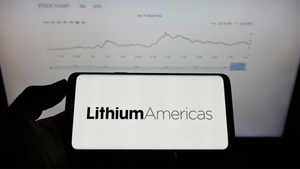
The financial world has witnessed a seismic shift with the U.S. Securities and Exchange Commission's (SEC) landmark approval of Spot Bitcoin and Ethereum Exchange-Traded Funds (ETFs). These approvals, unfolding in January and July of 2024 respectively, have not only opened the floodgates for billions in institutional capital but have also unequivocally legitimized crypto assets within the hallowed halls of traditional finance. This transformative development marks a new chapter for digital assets, integrating them into mainstream investment portfolios and signaling a profound evolution in how Wall Street views the decentralized future of money.
A New Era of Accessibility: What Happened and Why It Matters
The journey to this pivotal moment was protracted, marked by over a decade of rejections and persistent advocacy from the crypto industry. The U.S. SEC finally approved the listing and trading of 11 spot Bitcoin ETFs on January 10, 2024, with trading commencing the very next day. This decision followed intense pressure, including a significant legal victory by Grayscale (OTCQX: GBTC) against the SEC, which forced the agency to reconsider its stance. Major players like BlackRock (NYSE: BLK), Fidelity (NYSE: FDEL), and ARK 21Shares were among the first to launch these products.
The approval for spot Ethereum ETFs followed a two-step process. The SEC first greenlit the "19b-4" rule change applications on May 23, 2024, allowing for the listing and trading of these ETFs. Subsequently, the final "S-1" registration statements were approved on July 22, 2024, enabling trading to begin on July 23, 2024. Approximately eight spot Ether ETFs were approved, including offerings from Grayscale, Bitwise, and BlackRock. Notably, these Ethereum ETFs were amended to preclude any staking of Ether, addressing specific regulatory concerns.
The immediate impact has been staggering. Spot Bitcoin ETFs saw a collective trading volume of $4 billion on their first day and attracted over $50 billion in institutional money within the first quarter of 2025, climbing to $134.6 billion in assets under management (AUM) by the third quarter. BlackRock’s iShares Bitcoin Trust (IBIT) alone amassed over $50 billion in assets within 11 months, setting a record for the fastest ETF growth in history. Ethereum ETFs, while newer, have mirrored this success, drawing $3.87 billion in net inflows by August 2025 and pushing their total AUM to a new peak of $12.1 billion by July 2025. These inflows have significantly bolstered market sentiment, propelling Bitcoin and Ethereum prices to new highs and validating their status as serious investment vehicles.
This regulatory embrace has profoundly legitimized crypto assets. By providing a regulated and accessible pathway through traditional brokerage accounts, these ETFs address previous concerns about custody, security, and transparency. This accessibility has attracted a broader range of investors, from traditional asset managers to pension funds, dismantling the "wild west" stigma once associated with cryptocurrencies. Digital assets are now increasingly treated as strategic asset classes, comparable to gold or equities, marking a structural shift that firmly integrates them into mainstream financial portfolios.
The Shifting Sands: Winners and Losers in the ETF Era
The advent of Spot Bitcoin and Ethereum ETFs has created a clear delineation of winners and those facing new challenges across the financial ecosystem.
Leading the charge among the winners are the asset management firms that launched these pioneering ETFs. BlackRock (NYSE: BLK) has emerged as a titan in this space, with its iShares Bitcoin Trust (IBIT) quickly surpassing $80 billion in AUM and generating substantial fee revenue. BlackRock has also become a key player in Ethereum ETFs with its iShares Ethereum Trust (ETHA). Fidelity (NYSE: FDEL) with its Wise Origin Bitcoin Fund (FBTC), and Grayscale (OTCQX: GBTC), despite initial outflows from its converted Bitcoin Trust, remain significant beneficiaries, capturing billions in new assets. Other issuers like Ark/21Shares (NYSE: ARKB) and VanEck (NYSE: VNE) have also seen considerable success, actively competing for market share.
Crypto exchanges like Coinbase (NASDAQ: COIN) have also reaped substantial rewards, serving as primary custodians for several major spot Bitcoin and Ethereum ETFs. This role has significantly boosted their institutional business lines and increased trading volumes, especially around U.S. market hours, enhancing overall liquidity. Crypto miners such as Marathon Digital Holdings (NASDAQ: MARA), Riot Platforms (NASDAQ: RIOT), and Cipher Mining (NASDAQ: CIFR) have directly benefited from the increased institutional demand and the subsequent appreciation in Bitcoin's price, leading to improved profitability. MicroStrategy (NASDAQ: MSTR), often seen as a proxy for Bitcoin exposure, has also seen its stock outperform due to its substantial Bitcoin holdings.
Conversely, some traditional financial giants, like Vanguard, have taken a cautious stance, opting not to offer these new crypto products on their platform. While this aligns with their traditional asset class focus, it risks alienating clients seeking crypto exposure and potentially losing market share to more crypto-forward competitors. Furthermore, Bitcoin futures ETFs, while still relevant, may see their appeal somewhat diminished as spot ETFs offer more direct exposure to the underlying asset. For some individual investors, the convenience and regulatory oversight of ETFs might reduce the incentive for direct crypto ownership and self-custody, shifting some retail speculation towards these regulated products.
Beyond Bitcoin: Industry Impact and Broader Implications
The approval of Spot Bitcoin and Ethereum ETFs signifies a monumental leap in the legitimization of cryptocurrency, weaving digital assets deeper into the fabric of traditional finance. This event marks the definitive end of the "wild west" era for the two largest cryptocurrencies, cementing their status as investable assets for a global audience.
The ripple effects on other digital assets (altcoins) are significant. The success of Bitcoin and Ethereum ETFs creates a "halo effect," validating the broader asset class and fueling anticipation for similar products for other major altcoins, such as Solana (SOL), XRP, and Dogecoin. This institutional validation is expected to drive increased liquidity and trading volumes, potentially ushering in an "altcoin season" as capital rotates into smaller, more speculative assets. However, the ability of an altcoin to secure an ETF listing may become a "benchmark for relevance," shaping future investment trends.
For Decentralized Finance (DeFi), the impact is multifaceted. Increased institutional adoption and market legitimization could boost overall crypto market growth and liquidity, positively impacting DeFi protocols built on Ethereum. There's also a nascent discussion around "tokenization of ETFs" and their integration into DeFi ecosystems, potentially bridging traditional finance with blockchain technology. However, concerns about increased centralization remain if large institutional holdings through ETFs begin to exert significant influence over decentralized networks. Regulatory scrutiny, exemplified by the early removal of staking components from spot Ethereum ETF applications, could also impose restrictions on DeFi activities.
The NFT market, primarily built on Ethereum, is also poised for indirect benefits. Increased accessibility and institutional interest in Ethereum could lead to greater liquidity and capital inflow into its ecosystem, underpinning NFTs and dApps. This growing legitimacy of crypto could lower barriers for new investors to explore NFTs, with nascent discussions even exploring the potential for NFT ETFs.
From a regulatory perspective, the SEC's approvals signal an evolving, albeit cautious, approach. The classification of ETF shares as "Commodity Based Trust Shares" for Ethereum, while not a definitive statement, suggests a potential shift towards viewing Ether as a commodity. The SEC is reportedly working on "generic listing standards" for crypto ETPs, which could streamline future approvals. This evolving regulatory landscape necessitates continuous adaptation from all market participants, as clarity surrounding issues like staking for Ethereum ETFs continues to unfold.
Historically, the introduction of gold ETFs in the early 2000s, such as the SPDR Gold Shares (GLD) launched in 2004, provides a compelling precedent. Gold ETFs democratized access to gold, leading to significant institutional inflows and enhanced liquidity. Bitcoin ETFs have already mirrored this, attracting billions and even surpassing gold ETFs in AUM in the U.S. in less than a year. This comparison underscores the transformative potential of crypto ETFs to integrate digital assets into mainstream finance, much like gold's journey from a niche commodity to a global investment staple.
The Road Ahead: What Comes Next
The approval of Spot Bitcoin and Ethereum ETFs has irrevocably altered the trajectory of the crypto industry, ushering in a period of dynamic evolution and unprecedented integration with traditional finance.
In the short term, we will continue to see robust institutional inflows, though market volatility may persist, influenced by macroeconomic factors and the ebb and flow of capital into these newly accessible products. The rapid accumulation of assets by ETFs, particularly BlackRock's IBIT, demonstrates an insatiable appetite for regulated crypto exposure. Market participants must adapt to these new dynamics, with traditional exchanges potentially facing shifts in investor preference as simplified access via ETFs gains traction. Robust custody solutions, like those provided by Coinbase (NASDAQ: COIN), will remain critical to supporting these massive institutional holdings.
Looking at the long term, these ETFs are expected to further legitimize Bitcoin and Ethereum as strategic asset classes, fostering broader global adoption. This increased institutional involvement is projected to contribute to reduced long-term market volatility, potentially leading to a more stable and mature crypto market, where parabolic bull runs and devastating bear markets become less frequent. The success of these initial ETFs is also a clear signal for the "coming wave" of altcoin ETFs. There are strong expectations for Solana (SOL) and XRP ETFs, with filings already underway for various other altcoins, potentially triggering an "altcoin summer" with surging capital and bullish momentum across the broader crypto market.
Strategic pivots are essential for all market participants. Investors will need to consider diversification beyond just Bitcoin and Ethereum as more altcoin ETFs become available. They will also need to understand the nuances of investing through ETFs versus direct ownership, performing due diligence on both the product and the underlying asset. Crypto exchanges and service providers must adapt to increased competition from traditional finance, focusing on unique features, advanced trading tools, and secure custody solutions that meet institutional demands. Traditional financial institutions, including banks and asset managers, are increasingly integrating digital assets into their long-term strategies, exploring tokenization of traditional assets on blockchains like Ethereum and developing new crypto-backed financial products, including those with staking capabilities (pending regulatory clarity).
Emerging market opportunities include the continued growth of Real-World Asset (RWA) tokenization on platforms like Ethereum, where traditional assets are digitized on a blockchain. The intersection of AI and crypto also presents vast potential for innovation and efficiency. However, challenges persist, notably regulatory hurdles as the SEC continues to grapple with a comprehensive framework for digital assets, and concerns around centralization as large institutional holdings via ETFs could concentrate a significant portion of Bitcoin and Ethereum supply, potentially impacting market dynamics. Geopolitical and macroeconomic factors will also continue to exert influence.
The most likely scenario is the continued, irreversible integration of cryptocurrencies into traditional financial markets, with ETFs serving as a primary gateway. This will lead to increased capital inflows, enhanced liquidity, and a more mature, regulated market. The debate between decentralization and centralization will persist, driving innovators to find solutions that balance institutional participation with the core ethos of blockchain.
A New Dawn for Digital Assets: Conclusion
The approval of Spot Bitcoin and Ethereum ETFs represents a watershed moment in the financial landscape, definitively bridging the gap between legacy Wall Street and the burgeoning world of decentralized finance. This pivotal development has not only injected billions in institutional capital but has also conferred an undeniable level of legitimacy upon crypto assets, firmly establishing them as a recognized and investable class.
The key takeaways are clear: an unprecedented wave of institutional confidence has been unleashed, propelling Bitcoin and Ethereum into mainstream investment portfolios. These ETFs offer unparalleled accessibility, transparency, and regulatory oversight, effectively democratizing access to cryptocurrencies for a vast spectrum of investors. The strong correlation between ETF flows and asset prices underscores their growing influence, with Ethereum ETFs, in particular, demonstrating robust performance driven by ETH's utility in decentralized applications.
Moving forward, the market is poised for continued maturation and deeper integration. The increased liquidity and regulatory clarity fostered by these ETFs are expected to contribute to greater price stability and efficiency in price discovery. The success of these initial products also sets a powerful precedent, paving the way for potential diversification into other altcoin ETFs as the regulatory environment evolves. However, macroeconomic conditions, particularly central bank policies, will remain a crucial determinant of overall market sentiment.
The significance and lasting impact of these ETFs cannot be overstated. They serve as vital bridges, connecting the traditional financial system with the innovative future of money. By transforming cryptocurrencies from niche, speculative instruments into core components of institutional portfolios, these ETFs have initiated a powerful, self-reinforcing cycle of demand and capital allocation. This "game-changing entry point" promises deeper liquidity, potentially reduced volatility, and a more robust integration of digital assets into global financial systems, signifying an irreversible shift towards mainstream crypto adoption.
For investors in the coming months, vigilance is paramount. Closely monitor ETF inflows and outflows for insights into market sentiment and price movements, paying particular attention to the performance of highly liquid products from major issuers like BlackRock (NYSE: BLK) and Fidelity (NYSE: FDEL). Track macroeconomic indicators, especially interest rate decisions from central banks, as these will heavily influence risk appetite. Keep a keen eye on regulatory developments, particularly concerning potential staking approvals for Ethereum ETFs by late 2025, which could significantly enhance ETH’s appeal, and discussions around ETFs for other cryptocurrencies. Stay informed on ecosystem developments within Ethereum's DeFi and NFT sectors, as these innovations can directly influence institutional interest. Finally, be prepared for continued volatility, as cryptocurrencies, even within a regulated ETF wrapper, remain inherently dynamic assets. By diligently monitoring these factors, investors can strategically position themselves to capitalize on the ongoing institutionalization and mainstream integration driven by the transformative power of spot ETFs.






